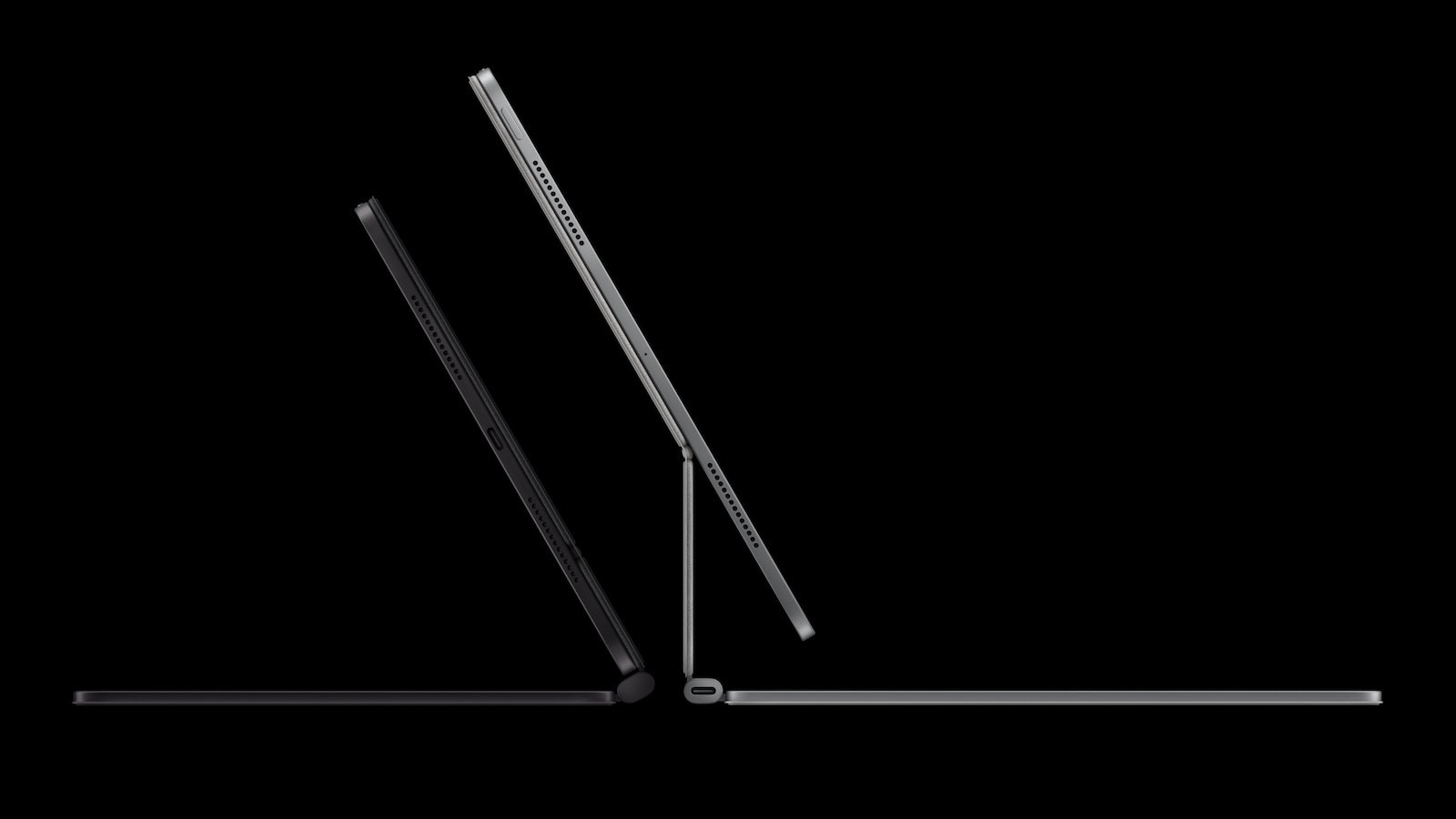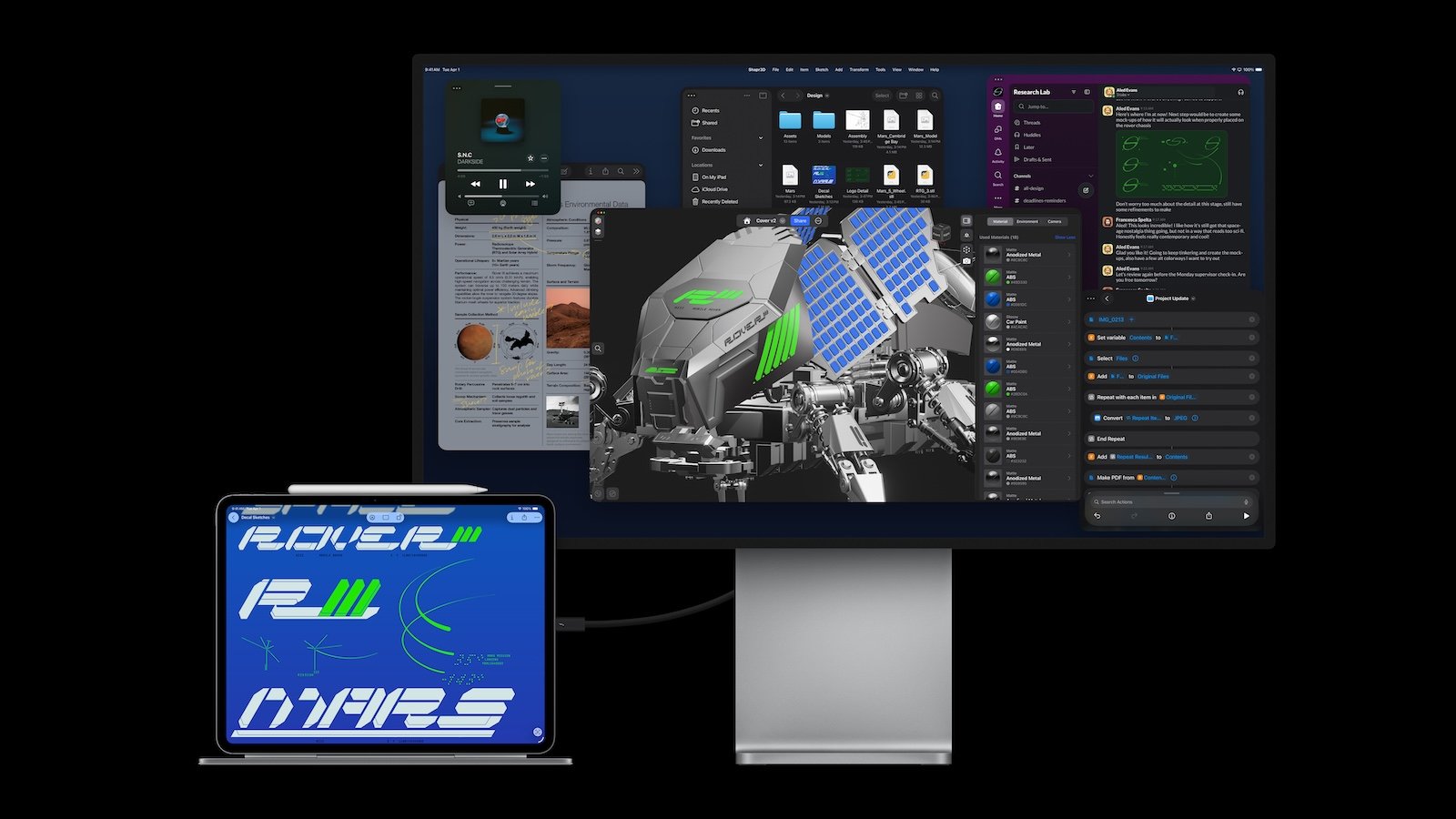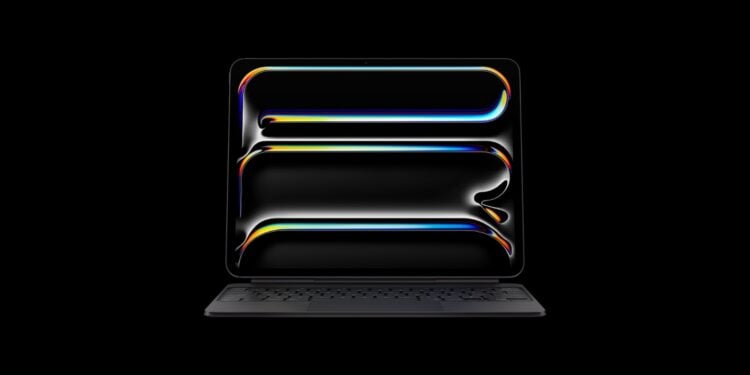Apple has introduced the new M5 iPad Pro—the most powerful iPad the company has ever built. The M4 iPad Pro was already considered extremely fast, but with the new M5 chip, an improved modem, more RAM, and new connectivity options, Apple is taking the next evolutionary step. The question is: How big is the difference really, and is the upgrade from the M4 to the M5 iPad Pro worth it?
The iPad Pro has always been the benchmark among tablets. The M-series devices brought the power of MacBooks into a slim, portable format. With the M5, Apple is now taking things a step further – especially in the areas of graphics performance, AI processing, memory bandwidth, and connectivity. Hardly anything has changed on the outside, but inside, there's significantly more technology than before.
The new M5 chip
The most significant upgrade is in the processor. The M5 iPad Pro is one of the first devices to feature the new M5 chip. The GPU now features Neural Accelerators—the same technology used in the A19 chip in the iPhone 17. According to Apple, this enables peak graphics performance for AI-based workloads up to four times higher than with the M4 chip.
The CPU is also faster, albeit only moderately—estimated at around 15 percent. Depending on the memory configuration, the M5 iPad Pro offers up to ten CPU and ten GPU cores. The cheaper models lose one performance core and operate with nine CPU cores. The Neural Engine remains 16-core, but is more powerful than last year.

More RAM and faster memory bandwidth
The memory has also been upgraded. The 256 or 512 GB models now offer 12 GB of RAM – up from 8 GB. The 1 TB or 2 TB versions remain at 16 GB. Furthermore, the memory bandwidth has increased to over 150 GB/s, an improvement of around 30 percent.
According to Apple, this has a direct impact on multitasking, AI processing, and gaming performance. iPadOS 26 particularly benefits: windows move more smoothly, multiple apps run reliably in parallel, and complex workflows are processed noticeably faster.
Support for fast charging
For the first time, the iPad Pro supports fast charging. With the new 40W Dynamic Power Adapter (maximum 60W), the device can be charged up to 50 percent in 35 minutes. Other USB-C power adapters with at least 60W also deliver this charging speed. Previous models—including the M4—did not offer fast charging.
New C1X 5G modem
The iPad Pro is the second Apple device, after the iPhone Air, to use the new C1X modem. According to the manufacturer, the Apple-developed modem offers up to 50 percent faster cellular data performance than its predecessor while operating more efficiently.
Officially, the battery life remains the same: up to ten hours of browsing via Wi-Fi or video playback, and up to nine hours of browsing over the cellular network. However, those who frequently use the iPad on the go will benefit from improved energy efficiency. Apple claims that the M5 iPad Pro consumes up to 30 percent less power than the M4 model during intensive cellular use.

New N1 wireless chip
The M5 iPad Pro also features the new N1 wireless chip, first introduced in the iPhone 17 series and replacing its predecessor's wireless technology. The N1 supports Wi-Fi 7 (instead of Wi-Fi 6E), Bluetooth 6, and Thread.
This improves performance on 5 GHz networks, making features like AirDrop and Personal Hotspot more stable. The chip is also more energy efficient and ensures a more reliable connection with other devices overall.
Support for external displays with 120 Hz
The new iPad Pro can now drive external displays at up to 120 Hz. This is a noticeable improvement for creatives and gamers. The new Adaptive-Sync feature reduces latency and ensures smoother motion on external monitors – especially for video editing and high-frame-rate gaming.
Whether Apple's upcoming Studio Display will also offer a 120 Hz refresh rate has not been confirmed, but it seems likely.

What remains the same
Visually and in some key areas, everything remains the same. The M5 iPad Pro is available in 11- and 13-inch sizes, both with identical dimensions. The Ultra Retina XDR display is also unchanged.
The camera configuration remains the same as the M4 model – despite earlier speculation about a second front camera. Prices also remain the same: the 11-inch model starts at €1,099, the 13-inch model at €1,449. Accessories like the Apple Pencil and Magic Keyboard remain unchanged.
The M5 iPad Pro focuses on targeted improvements
The M5 iPad Pro isn't a completely new device, but a technical refinement of the M4 model—but a significant one. The new M5 chip delivers significantly more performance in AI applications and GPU workloads, while memory bandwidth, RAM, and energy efficiency have been improved. Added to that are fast charging, Wi-Fi 7, Bluetooth 6, and a more efficient 5G modem. Those who already own an M4 model will only notice the difference in everyday use if they work a lot with compute-intensive applications, creative projects, or mobile communications. For everyone else, the new generation iPad Pro remains the most powerful tablet on the market—just a bit more future-proof. The best products for you: Our Amazon Storefront offers a wide selection of accessories, including accessories for HomeKit. (Image: Apple)
- M5 Mac – Introduction of the Apple chip and launch of the models
- iPhone with eSIM: A small modification with a big impact
- iPhone 17 Pro stays cool: All about the new vapor chamber
- AirPods Pro 3 vs. AirPods Pro 1: What's really changed
- Apple Watch Ultra 3 vs. Apple Watch Ultra 2: The Differences
- iPhone 17: Why this model is so convincing
- iPhone Air or iPhone 17 Pro? All the differences compared
- iPhone 17 vs. iPhone 16: All the differences in detail
- iPhone 17 Pro vs. iPhone 17 Pro Max: Differences at a glance
- iPhone Air: Seven facts about the new ultra-thin smartphone
- AirPods Pro 3: Apple's headphones with 8 exciting upgrades
- AirPods Pro 3 vs. AirPods Pro 2: The big comparison in detail
- Is the iPhone 17 Pro not worth it? The iPhone 18 Pro in focus
- Apple Watch Ultra 3 vs. Ultra 2, Series 11: Battery comparison
- iPhone 17 Pro: Everything about the new camera platform & more





